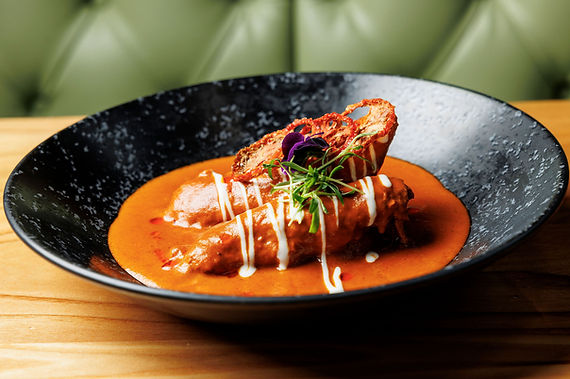Soy sauce is a kitchen staple known for its rich umami flavor, versatility, and ability to enhance a wide range of dishes. Whether you’re making stir-fries, marinades, soups, or dressings, soy sauce is a simple way to add depth and complexity to your cooking. This guide explores creative and practical ways to use soy sauce effectively in everyday meals.
What Is Soy Sauce?
Soy sauce is a fermented liquid condiment made from soybeans, wheat, salt, and water. The fermentation process produces its characteristic salty, savory, and slightly sweet flavor. It comes in different varieties such as light, dark, and low-sodium, each suited to specific cooking applications.
Ways to Use Soy Sauce in Cooking
1. Marinades
Soy sauce is an excellent base for marinades, tenderizing meat and infusing it with flavor. Combine soy sauce with garlic, ginger, honey, and a splash of sesame oil for a balanced marinade for chicken, beef, or fish.
Example:
- Teriyaki Chicken Marinade: Mix soy sauce, brown sugar, garlic, and ginger, then marinate chicken for 30 minutes before grilling or baking.
2. Stir-Fries
Soy sauce is a must-have for stir-fry dishes. It blends seamlessly with vegetables, noodles, and proteins, adding a savory note to the mix.
Example:
- Vegetable Stir-Fry: Toss broccoli, carrots, and snap peas in soy sauce, garlic, and sesame oil for a quick and healthy meal.
3. Soups and Broths
Soy sauce enhances soups and broths by adding umami depth without overpowering the other flavors.
Example:
- Ramen Broth: Add soy sauce to chicken or vegetable stock along with miso paste and sesame oil for a flavorful ramen base.
4. Dipping Sauce
Soy sauce is the foundation for many dipping sauces. Mix it with vinegar, garlic, chili flakes, or sesame oil for an easy and flavorful dip.
Example:
- Dumpling Sauce: Combine soy sauce, rice vinegar, minced garlic, and a touch of chili oil.
5. Salad Dressings
Add soy sauce to homemade salad dressings for a savory twist.
Example:
- Asian Salad Dressing: Mix soy sauce, olive oil, honey, and lime juice for a tangy dressing.
6. Glazes and Coatings
Soy sauce can be used as a glaze for roasted or grilled dishes, adding a glossy finish and rich flavor.
Example:
- Soy-Glazed Salmon: Brush salmon with a mixture of soy sauce, brown sugar, and ginger before baking or grilling.
7. Seasoning Substitute
Soy sauce can be used in place of salt to season rice, pasta, and other dishes.
Example:
- Fried Rice: Replace salt with soy sauce for a balanced, savory flavor.
Tips for Using Soy Sauce
- Start Small: Soy sauce is salty, so use a small amount initially and adjust as needed.
- Choose the Right Variety: Light soy sauce is ideal for seasoning, while dark soy sauce works well for color and rich flavor.
- Combine with Sweeteners: Balance soy sauce’s saltiness with honey, sugar, or mirin for a well-rounded flavor.
- Store Properly: Keep soy sauce in a cool, dark place or refrigerate after opening to maintain its freshness.
- Experiment: Use soy sauce in non-traditional ways, such as adding a splash to scrambled eggs or mashed potatoes.
Common Soy Sauce-Based Recipes
1. Soy Sauce Chicken Stir-Fry
Ingredients:
- 2 chicken breasts (sliced)
- 2 tablespoons soy sauce
- 1 tablespoon sesame oil
- 1 cup mixed vegetables (e.g., bell peppers, carrots, broccoli)
- 1 teaspoon garlic (minced)
Instructions:
- Marinate chicken with soy sauce for 15 minutes.
- Heat sesame oil in a pan and stir-fry chicken until golden.
- Add vegetables and garlic, and cook until tender.
- Toss everything in additional soy sauce and serve hot.
2. Soy Sauce Noodles
Ingredients:
- 200g noodles
- 2 tablespoons soy sauce
- 1 teaspoon sesame oil
- 1 green onion (chopped)
Instructions:
- Cook noodles according to package instructions.
- Toss noodles in soy sauce, sesame oil, and chopped green onion.
- Serve as a side dish or add protein for a complete meal.
3. Soy Sauce Glazed Tofu
Ingredients:
- 1 block tofu (cubed)
- 2 tablespoons soy sauce
- 1 tablespoon honey
- 1 teaspoon garlic (minced)
Instructions:
- Pan-fry tofu cubes until crispy.
- Mix soy sauce, honey, and garlic, then pour over tofu.
- Cook until tofu is coated and sauce thickens.
FAQs
1. What are the main types of soy sauce?
The main types of soy sauce are light soy sauce, dark soy sauce, and low-sodium soy sauce. Light soy sauce is thinner and saltier, making it ideal for seasoning dishes like stir-fries and marinades. Dark soy sauce is thicker and sweeter, often used to add a rich, deep color and bold flavor to dishes such as braised meats or stews. Low-sodium soy sauce contains less salt but maintains a similar flavor profile, making it a healthier choice for those watching their sodium intake. Each type has unique culinary uses, making soy sauce a versatile kitchen staple.
2. Can soy sauce be used in non-Asian recipes?
Yes, soy sauce can be used in a variety of non-Asian recipes to add depth and umami. It works wonderfully as a substitute for salt in dishes like stews, soups, and marinades, enhancing the overall flavor. You can mix soy sauce into salad dressings, pasta sauces, or mashed potatoes for a savory twist. Its versatility extends to Western-style roasted vegetables or grilled meats, where it acts as a seasoning or glaze. Soy sauce’s ability to complement various cuisines makes it a valuable addition to any pantry, regardless of the type of cuisine you’re preparing.
3. How do I balance the saltiness of soy sauce?
To balance the saltiness of soy sauce, incorporate sweeteners such as honey, brown sugar, or mirin. These additions create a harmonious sweet-and-savory flavor. Alternatively, you can dilute soy sauce with water, broth, or vinegar to mellow its intensity without compromising the dish. If the dish becomes too salty, adding more neutral ingredients like rice, noodles, or vegetables can help absorb the excess saltiness. Balancing soy sauce is about creating a well-rounded flavor that enhances your dish while ensuring the salt content doesn’t overpower other ingredients.
4. How long does soy sauce last
Unopened soy sauce can last up to two years when stored in a cool, dry place. Once opened, it should be refrigerated to maintain its freshness and flavor. Properly stored soy sauce typically remains good for up to six months after opening. Over time, its quality may decline, resulting in a less vibrant taste. To ensure the best flavor, always check for changes in color, smell, or taste. Keeping the bottle tightly sealed and refrigerated will help prolong its shelf life and ensure it’s ready for your culinary needs.
5. Can I cook with soy sauce on high heat?
Yes, soy sauce can be used in high-heat cooking, but it’s important to avoid prolonged exposure to extreme heat. When soy sauce is cooked for too long at high temperatures, it can develop a bitter taste. For best results, add soy sauce later in the cooking process to retain its flavor and prevent bitterness. When stir-frying or grilling, use soy sauce as part of a marinade or add it just before finishing the dish. This technique ensures that its rich umami flavor enhances your cooking without becoming overpowering..
Conclusion
Soy sauce is a versatile and essential ingredient that enhances the flavors of countless dishes. Whether used in marinades, stir-fries, soups, or salad dressings, it provides depth, richness, and umami. With these tips and recipes, you can unlock its full potential and create delicious meals every time. Try incorporating soy sauce into your cooking and discover its endless possibilities!
















